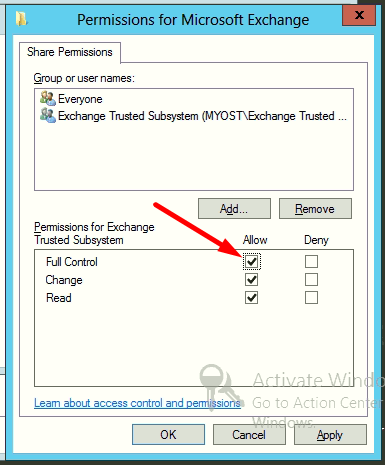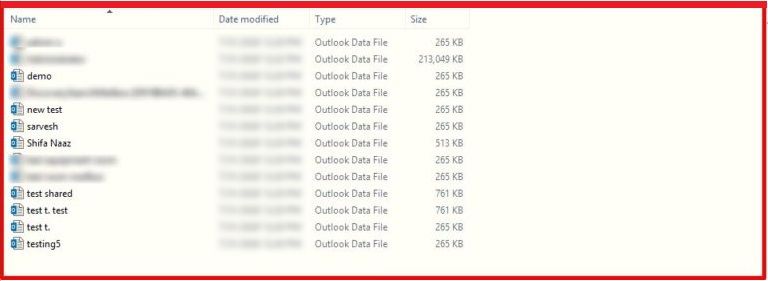How to Export All Mailboxes In Database to PST Exchange 2010/2013/2016? Get Solution
How to Export All Mailboxes In Database to PST Exchange 2010/2013/2016? Get Solution
Summary: Are you facing trouble for finding the solution to export all mailboxes in database to PST Exchange 2010/2013/2016, then you are at the right place. In this write-up, we will provide the manual and professional method which help you to export all Exchange database mailboxes to Outlook data file.
Exchange database file contains several mailboxes such as: user, archive, shared, disconnected, etc.. Each of these mailbox contains sensitive information and plays very important role in organizations. To keep its data safe and secure from corruption, server crash, hardware/software failure, human deletion, and many more threats. It is necessary to export all mailboxes to PST Exchange 2016/2013/2010.
After exporting to the Outlook data file, one can easily import the resultant file into MS Outlook to access the mailbox or they can keep the output file as a backup, in case if any disaster occurs in the future then they have a file to restore all the data back.
Users can use the Exchange PowerShell as the manual solution and Exchange EDB to PST converter as a professional method.
Automated Method to Export All Mailboxes in Database to PST Exchange 2010/2013/2016
Exchange EDB to PST Converter is capable to export all Exchange database mailboxes such as: user, shared, legacy, archive, disconnected to PST simultaneously without losing any data. It provides Quick and Advance scan option that removes corruption from the Exchange database file. Depending on the level of corruption you can select the scan mode option. The advance scan option also recovers permanently deleted Exchange mailboxes and data items from loaded offline/dismounted EDB file.
This utility supports the public folder and private mailboxes. You can export entire or selective mailbox and items (emails, contacts, calendars, journals, tasks, notes) to PST and different file formats: PDF, EML, HTML, MSG, MBOX.
The software is suitable with all versions of Exchange Server 2003, 2007, 2010, 2013, 2016, 2019 and you can easily perform Exchange 2010 export public folder contacts to PST along with other items. After exporting the Exchange data to the selected format the software auto-generate the export report which contains the success and fail count.
Key Features Of Professional Software
- Export offline/dismounted Exchange mailboxes to Outlook PST
- Preview Microsoft Exchange mailbox items before conversion
- Convert selective Exchange data items using date and category filter option
- Option to remove (SMIME/OpenPGP) email encryption from Exchange mailboxes
- Preserver original folder hierarchy and keep metadata intact
- Support all Exchange Server, MS Outlook, and Windows OS versions
Step by Step Method to Export All Mailboxes in Database to PST Exchange 2010/2013/2016
Step 1: Download > Install and Launch the automated software

Step 2: Click on Add File button > Load offline / dismounted EDB file > Click add

Step 3: Preview all Exchange mailboxes and data items > Click on the Export button

Step 4: Select all Exchange database mailboxes > Click on PST > Select browse button to set destination file path > Click Export button to download Exchange mailbox to PST file

All the mailboxes are successfully exported to the PST file format without any data loss.
Note: Use the Exchange Export Tool to export all EDB mailboxes to PST file from Live Exchange Server 2016, 2013, 2010, 2007, 2003.
Use Manual Solution to Export All Mailboxes In Database to PST Exchange 2010/2013/2016
Before exporting all the Exchange database mailboxes to the Outlook data file, you have to assign export permission because Microsoft Exchange by default doesn’t provide permission to export all EDB mailboxes.
Insert the PowerShell cmdlet given below to assign “Mailbox Import Export Role”

Now, create the shared folder where you export all mailboxes to PST Exchange 2013/2010 and grant full control to Exchange Trusted Subsystem security group

After providing all these permissions, insert the command given below to export all mailboxes in database to PST Exchange 2010/2013/2016


Output File

Finally all the Exchange are successfully exported to the Outlook data file.
Note: If any of the Exchange mailboxes are corrupted then there will be a risk of data loss while exporting the mailboxes. This solution requires technical expertise and its a very time-consuming process. So, it is recommended to use the professional method given in the above section which helps user to export all the EDB mailboxes in bulk with no loss of data and also it overcomes all the limitations that users face in the manual solution.
Bringing It All Together
Now you have the detailed information to export all mailboxes in database to PST Exchange 2010/2013/2016 by using the manual and professional method. The manual method export helps you to export the Exchange mailboxes but users need to have technical knowledge and skill to use Exchange PowerShell. While exporting the mailboxes if any of them are damaged or corrupted then you will face huge loss of data. That’s why here the automated method comes handy, it helps users to export all Exchange mailboxes to PST and various other file formats in a single shot of any size.